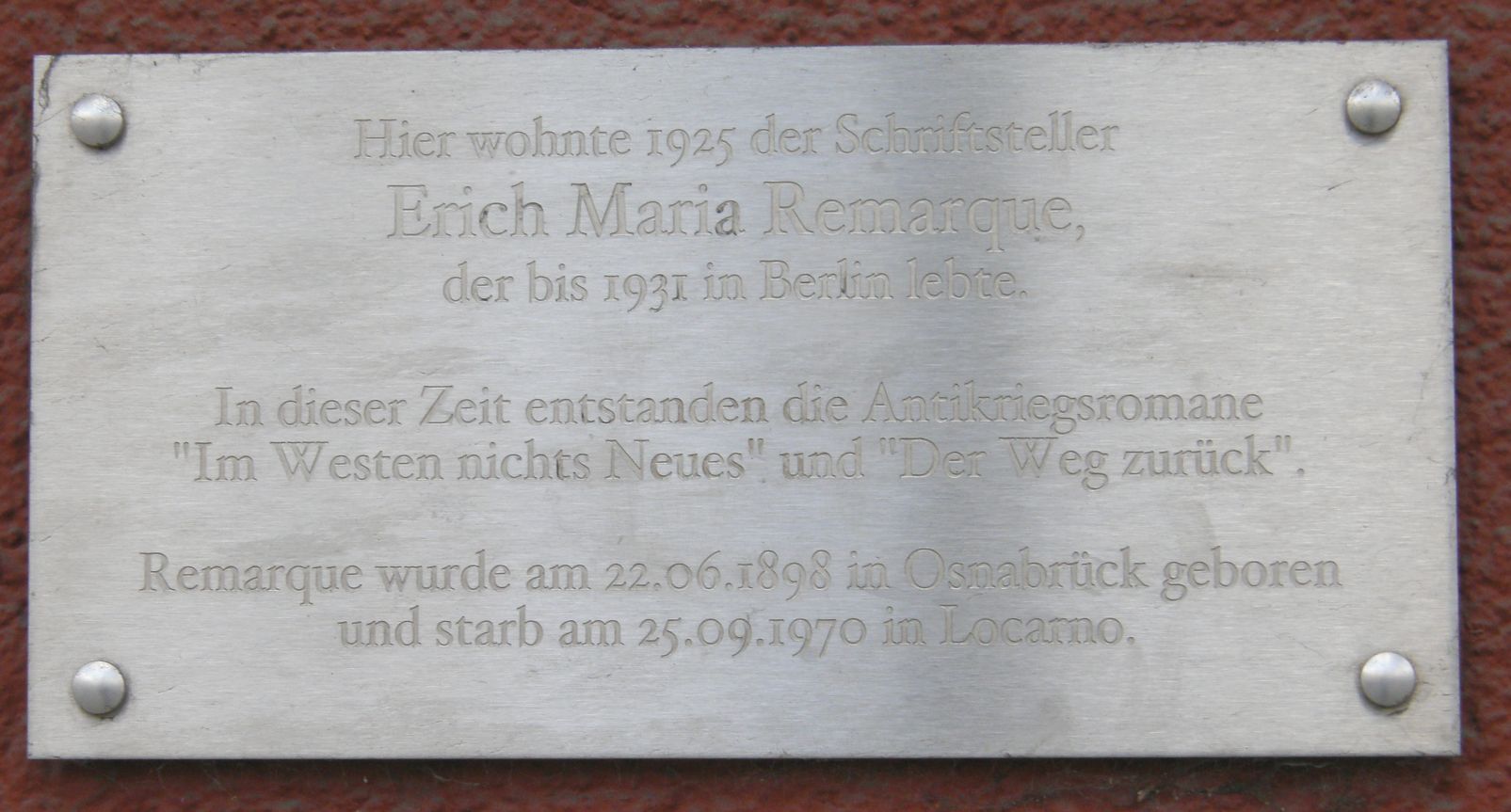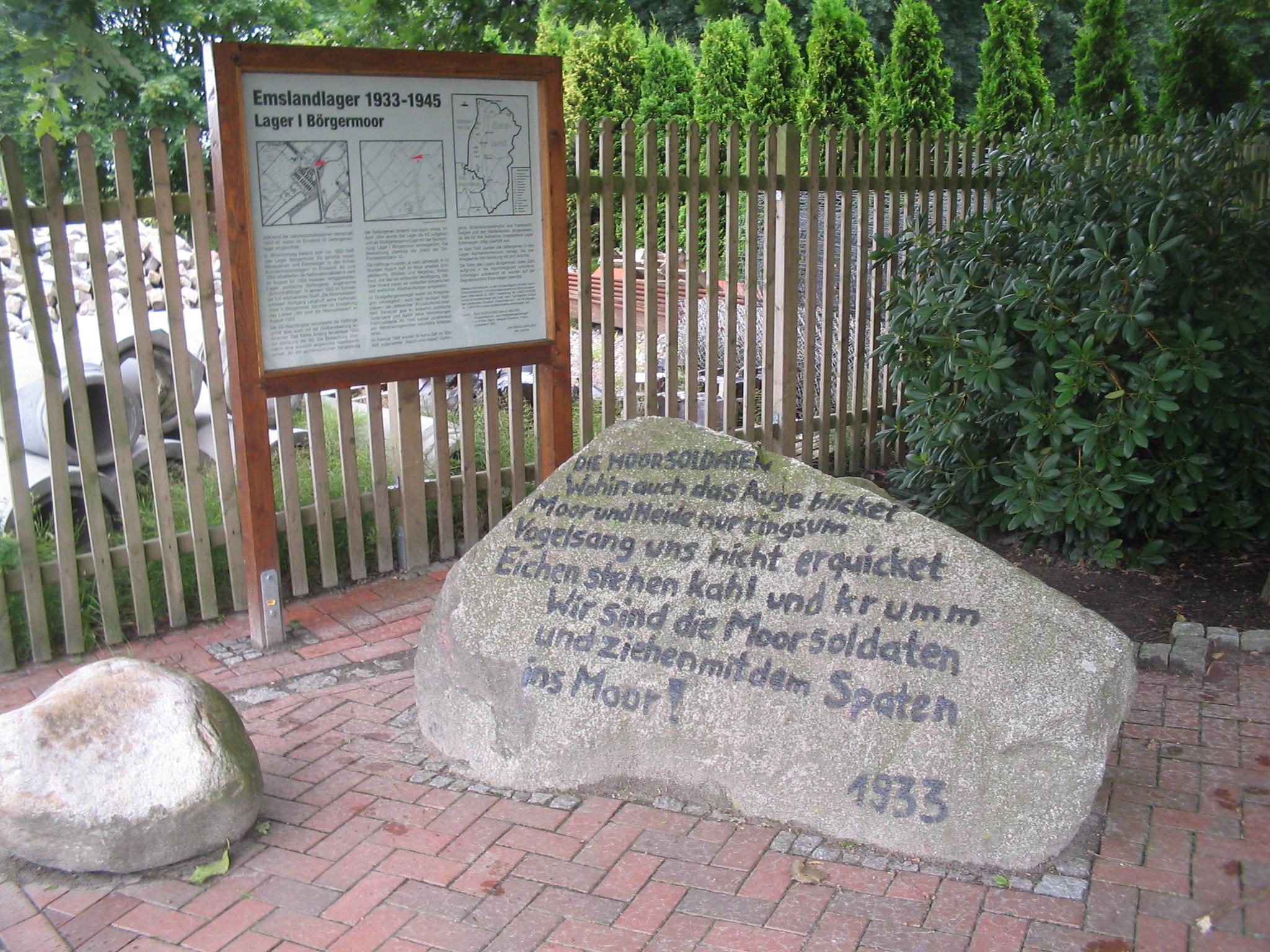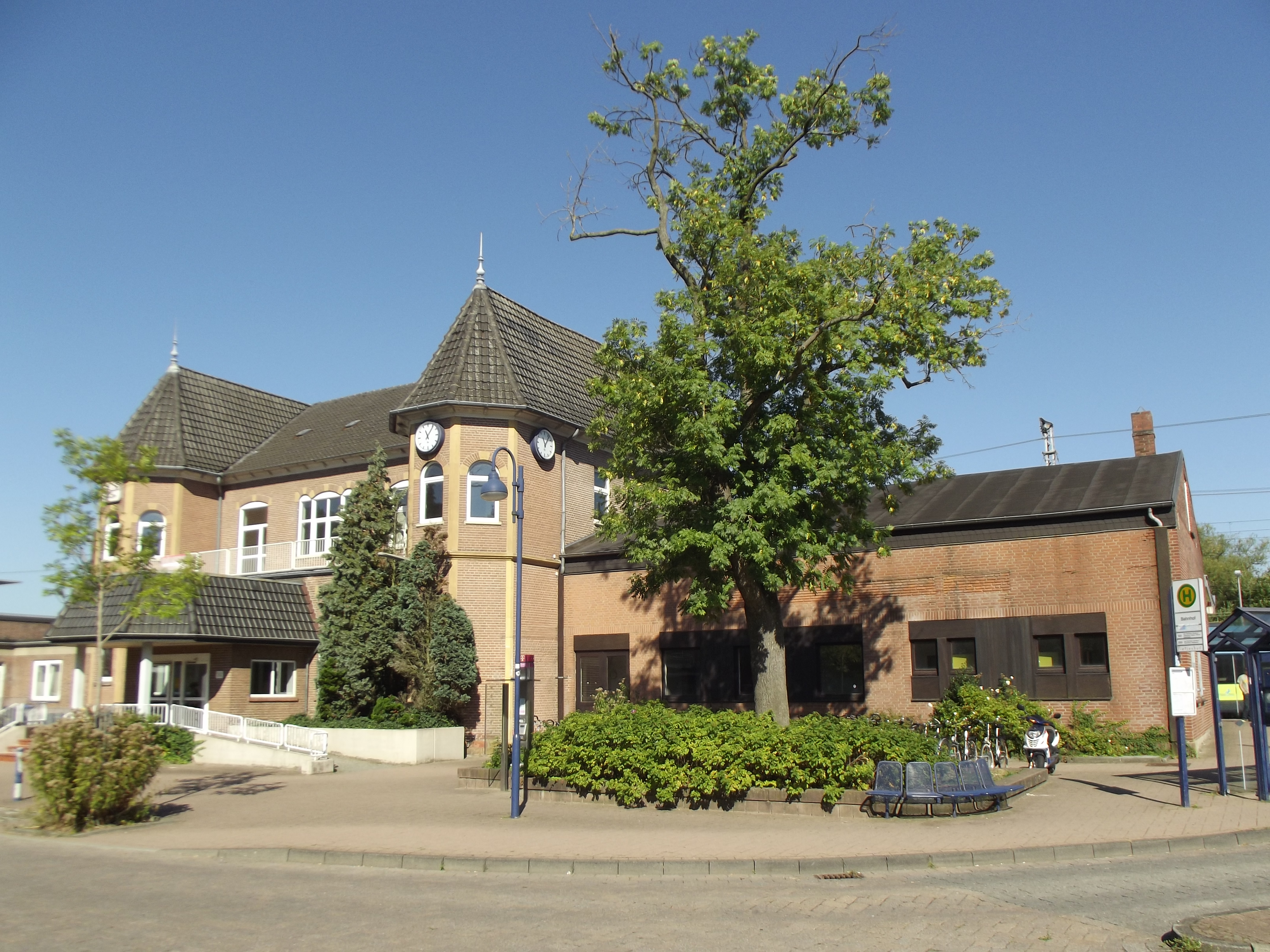|
Erich Maria Remarque
Erich Maria Remarque (; ; born Erich Paul Remark; 22 June 1898 – 25 September 1970) was a German novelist. His landmark novel '' All Quiet on the Western Front'' (1928), based on his experience in the Imperial German Army during World War I, was an international bestseller which created a new literary genre of veterans writing about conflict. The book was adapted to film several times. Remarque's anti-war themes led to his condemnation by Nazi propaganda minister Joseph Goebbels as "unpatriotic". He was able to use his literary success and fame to relocate to Switzerland as a refugee, and to the United States, where he became a naturalized citizen. Early life Remarque was born on 22 June 1898, as Erich Paul Remark, to Peter Franz Remark and Anna Maria (), a working-class Roman Catholic family in Osnabrück. He was never close with his father, a bookbinder, but he was close with his mother and he began using the middle name Maria after World War I in her honor. Rem ... [...More Info...] [...Related Items...] OR: [Wikipedia] [Google] [Baidu] |
Osnabrück
Osnabrück (; ; archaic English: ''Osnaburg'') is a city in Lower Saxony in western Germany. It is situated on the river Hase in a valley penned between the Wiehen Hills and the northern tip of the Teutoburg Forest. With a population of 168,145 Osnabrück is the fourth largest city in Lower Saxony. More recently Osnabrück has become well known for its industry. Numerous companies in the automobile, paper, steel and grocery sectors are located in the city and its surrounding area. In spite of the massive destruction inflicted on the city during World War II, the Altstadt (old town) was eventually reconstructed extensively with designs loyal to the original medieval architecture there. Osnabrück was also the home of the largest British garrison outside the United Kingdom. Osnabrück's modern, urban image is enhanced by the presence of more than 22,000 students studying at the University and the University of Applied Sciences. Although part of the state of Lower Saxony, his ... [...More Info...] [...Related Items...] OR: [Wikipedia] [Google] [Baidu] |
Conscription
Conscription, also known as the draft in the United States and Israel, is the practice in which the compulsory enlistment in a national service, mainly a military service, is enforced by law. Conscription dates back to antiquity and it continues in some countries to the present day under various names. The modern system of near-universal national conscription for young men dates to the French Revolution in the 1790s, where it became the basis of a very large and powerful military. Most European nations later copied the system in peacetime, so that men at a certain age would serve 1 to 8 years on active duty and then transfer to the reserve force. Conscription is controversial for a range of reasons, including conscientious objection to military engagements on religious or philosophical grounds; political objection, for example to service for a disliked government or unpopular war; sexism, in that historically men have been subject to the draft in the most cases; and ideol ... [...More Info...] [...Related Items...] OR: [Wikipedia] [Google] [Baidu] |
Emsland
Landkreis Emsland () is a districts of Germany, district in Lower Saxony, Germany named after the river Ems (river), Ems. It is bounded by (from the north and clockwise) the districts of Leer (district), Leer, Cloppenburg (district), Cloppenburg and Osnabrück (district), Osnabrück, the state of North Rhine-Westphalia (district of Steinfurt (district), Steinfurt), the district of County of Bentheim (district), Bentheim in Lower Saxony, and the Netherlands (provinces of Drenthe and Groningen (province), Groningen). History For a long time the region of the Emsland was extremely sparsely populated, due to the fens on both sides of the river. Small villages were established in medieval times along the river and on the Hümmling. In the 13th century the bishops of Prince-Bishopric of Münster, Münster gained control over the region; the Emsland remained property of the bishop Reichsdeputationshauptschluss, until 1803, when the clerical states German mediatisation, were dissol ... [...More Info...] [...Related Items...] OR: [Wikipedia] [Google] [Baidu] |
Hümmling (district)
Hümmling district existed 1815 to 1932 and was a district in what is now western Lower Saxony, Germany. It was named after the Hümmling hills, a ground moraine landscape in Emsland region History There are over 100 more or less well-preserved dolmens of the megalith culture in the Hümmling hills. Niederstift Münster Until 1803, in times of the Holy Roman Empire, Hümmling region was the northern part of the diocese and clerical territory of Münster (''Niederstift Münster''). When Clement Augustus, prince-bishop of Münster tried to use their soccage in order to build his castle at Clemenswerth, the peasants of the "Free Hümmling" fought a log successful trial at the Imperial Chamber Court in Wetzlar that they were not enfeoffed to anyone. Napoleon, Hanover, Prussia With the secularisation of all clerical states in Germany, the Niederstift Münster was given to the Duchy of Arenberg (1803 to 1810). Then it was part of the French Empire (1810 to 1814). By the Co ... [...More Info...] [...Related Items...] OR: [Wikipedia] [Google] [Baidu] |
Klein Berssen
Klein may refer to: People *Klein (surname) *Klein (musician) Places *Klein (crater), a lunar feature *Klein, Montana, United States *Klein, Texas, United States *Klein (Ohm), a river of Hesse, Germany, tributary of the Ohm * Klein River, a river in the Western Cape province of South Africa Business *Klein Bikes, a bicycle manufacturer * Klein Tools, a manufacturer * S. Klein, a department store *Klein Modellbahn, an Austrian model railway manufacturer Arts *Klein + M.B.O., an Italian musical group *Klein Award, for comic art *Yves Klein, French artist Mathematics *Klein bottle, an unusual shape in topology *Klein geometry *Klein configuration, in geometry *Klein cubic (other) *Klein graphs, in graph theory *Klein model, or Beltrami–Klein model, a model of hyperbolic geometry *Klein polyhedron, a generalization of continued fractions to higher dimensions, in the geometry of numbers *Klein surface, a dianalytic manifold of complex dimension 1 Other uses * Kleins, Lin ... [...More Info...] [...Related Items...] OR: [Wikipedia] [Google] [Baidu] |
Grafschaft Bentheim
County of Bentheim () is a districts of Germany, district (''Landkreis'') in Lower Saxony, Germany. It is bounded by (from the west and clockwise) the Netherlands, Dutch provinces of Overijssel and Drenthe, the district of Emsland, and the districts of Steinfurt (district), Steinfurt and Borken (district), Borken in North Rhine-Westphalia. History The District has roughly the same territory as the County of Bentheim, a state of the Holy Roman Empire that was dissolved in 1803. Geography The district's north-western region named (''low county'') protrudes into Dutch territory, and borders it to the north, west and south. The Vechte River (Dutch ''Vecht'') traverses the district from south to north and flows into the Netherlands. Coat of arms The arms are identical to the arms of the historic County of Bentheim. The origin of these arms is unknown. Towns and municipalities References External links Official website {{coord, 52.42, 7.08, display=title, for ... [...More Info...] [...Related Items...] OR: [Wikipedia] [Google] [Baidu] |
Wietmarschen
Wietmarschen (Northern Low Saxon: ''Wietmöschken'') is a unitary municipality (''Einheitsgemeinde'') in the district of Grafschaft Bentheim in Lower Saxony, Germany. It is split into the villages of Wietmarschen, Füchtenfeld, Schwartenpohl, Lohnerbruch, Nordlohne and Lohne with Lohne being the biggest and having the town hall while Wietmarschen, which is the second biggest, having the name. Geography Wietmarschen lies roughly west of Lingen, and northeast of Nordhorn. The community's highest elevation is the Rupingberg in Lohne at above sea level. There are plans to construct a viewing tower on it. Constituent communities The municipality is divided into six ''Ortsteile'' named Wietmarschen, Füchtenfeld, Schwartenpohl, Lohnerbruch, Nordlohne and Lohne. Religion The community of Wietmarschen diverges sharply from the rest of the district with regard to religion in that it has a largely Catholic character. In February 2006, the community's religious affiliations broke down th ... [...More Info...] [...Related Items...] OR: [Wikipedia] [Google] [Baidu] |
Armistice
An armistice is a formal agreement of warring parties to stop fighting. It is not necessarily the end of a war, as it may constitute only a cessation of hostilities while an attempt is made to negotiate a lasting peace. It is derived from the Latin ''arma'', meaning "arms" (as in weapons) and ''-stitium'', meaning "a stopping". The United Nations Security Council often imposes, or tries to impose, ceasefire resolutions on parties in modern conflicts. Armistices are always negotiated between the parties themselves and are thus generally seen as more binding than non-mandatory UN cease-fire resolutions in modern international law. An armistice is a '' modus vivendi'' and is not the same as a peace treaty, which may take months or even years to agree on. The 1953 Korean War Armistice Agreement is a major example of an armistice which has not been followed by a peace treaty. An armistice is also different from a truce or ceasefire, which refer to a temporary cessation of ho ... [...More Info...] [...Related Items...] OR: [Wikipedia] [Google] [Baidu] |
Duisburg
Duisburg (; , ) is a city in the Ruhr metropolitan area of the western States of Germany, German state of North Rhine-Westphalia. Lying on the confluence of the Rhine (Lower Rhine) and the Ruhr (river), Ruhr rivers in the center of the Rhine-Ruhr metropolitan region, Rhine-Ruhr Region, Duisburg is the 5th largest city in North Rhine-Westphalia and the List of cities in Germany by population, 15th-largest city in Germany. In the Middle Ages, it was a city-state and a member of the Hanseatic League, and later became a major centre of the iron, steel, and chemicals industries. For this reason, it was heavily bombed in World War II. Today it boasts the world's largest inland port, with 21 docks and 40 kilometres of wharf. Status Duisburg is a city in Germany's Rhineland, the fifth-largest city (after Cologne, Düsseldorf, Dortmund and Essen) in the nation's most populous federal state of North Rhine-Westphalia. Its 500,000 inhabitants make it Germany's List of cities in Germany by p ... [...More Info...] [...Related Items...] OR: [Wikipedia] [Google] [Baidu] |
Shrapnel Shell
Shrapnel shells were anti-personnel artillery munitions that carried many individual bullets close to a target area and then ejected them to allow them to continue along the shell's trajectory and strike targets individually. They relied almost entirely on the shell's velocity for their lethality. The munition has been obsolete since the end of World War I for anti-personnel use; high-explosive shells superseded it for that role. The functioning and principles behind shrapnel shells are fundamentally different from high-explosive shell fragmentation. Shrapnel is named after Lieutenant-General Henry Shrapnel, a Royal Artillery officer, whose experiments, initially conducted on his own time and at his own expense, culminated in the design and development of a new type of artillery shell. Usage of the term "shrapnel" has changed over time to also refer to fragmentation of the casing of shells and bombs, which is its most common modern usage and strays from the original meaning. ... [...More Info...] [...Related Items...] OR: [Wikipedia] [Google] [Baidu] |
Houthulst
Houthulst (; , ) is a municipality located in the Belgian province of West Flanders. The municipality consists of the sub-municipalities Houthulst, Jonkershove, Klerken and Merkem. On January 1, 2006, Houthulst had a total population of 9,051. The total area is 55.89 km² which gives a population density of 162 inhabitants per km². Landmarks * The ''Sint-Jan Baptistkerk'' (Church of Saint John the Baptist) is the church of Houthulst. It was rebuilt in 1924 after being completely destroyed during World War I. * The , containing the graves of almost 1800 Belgian soldiers killed during World War I. The cemetery also contains 81 Italian graves. Most of the soldiers who have been buried here were killed during the final assault on the Germans on September 28, 1918 The ceasefire that effectively ended the World War I, First World War took place on the eleventh hour of the eleventh day of the eleventh month of this year. Also in this year, the Spanish flu pandemic killed ... [...More Info...] [...Related Items...] OR: [Wikipedia] [Google] [Baidu] |
Torhout
Torhout (; ; ) is a City status in Belgium, city and Municipalities of Belgium, municipality located in the Belgium, Belgian province of West Flanders. The municipality comprises the city of Torhout proper, the villages of Wijnendale and Sint-Henricus, and the hamlet of De Driekoningen. On 29 February 2024 Torhout had a total population of 24,891. The total area is 45.23 km2 which gives a population density of 445 inhabitants per km2. People associated with Torhout * Rimbert, saint *Josse van Huerter, first settler, and captain-major of the island of Faial Island, Faial in the Portuguese Azores. * Karel Van Wijnendaele (Founder of Tour of Flanders (men's race), Tour of Flanders (Tour of Flanders)) * Benny Vansteelant (Multiple World Champion Duathlon) and Joerie Vansteelant * Luk Descheemaeker, winner at the 2nd International Holocaust Cartoon Competition#Winners 2, Holocaust cartoon contest in Tehran, 2016. *Hilde Crevits, Vice Minister-President of the Flemish Government and ... [...More Info...] [...Related Items...] OR: [Wikipedia] [Google] [Baidu] |




